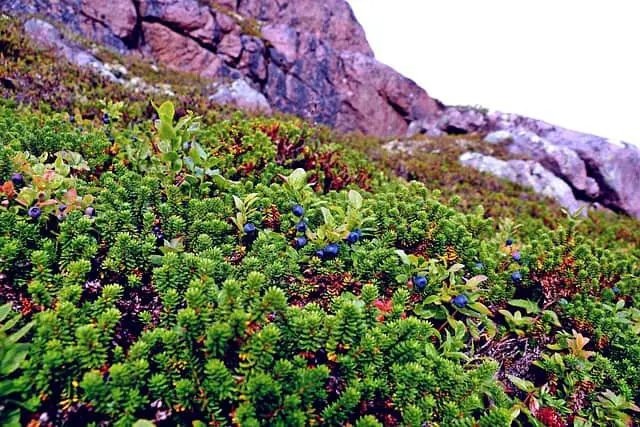For outdoor enthusiasts and nature lovers, New Mexico offers a treasure trove of edible wild berries waiting to be discovered. From the high desert of Las Cruces to the lush landscapes of Northern New Mexico, the state is home to a variety of delectable berries that can not only tantalize your taste buds but also provide essential nutrients. In this blog post, we’ll explore eleven edible wild berries found across the region, delving into an overview of these wild berries growing all around you.
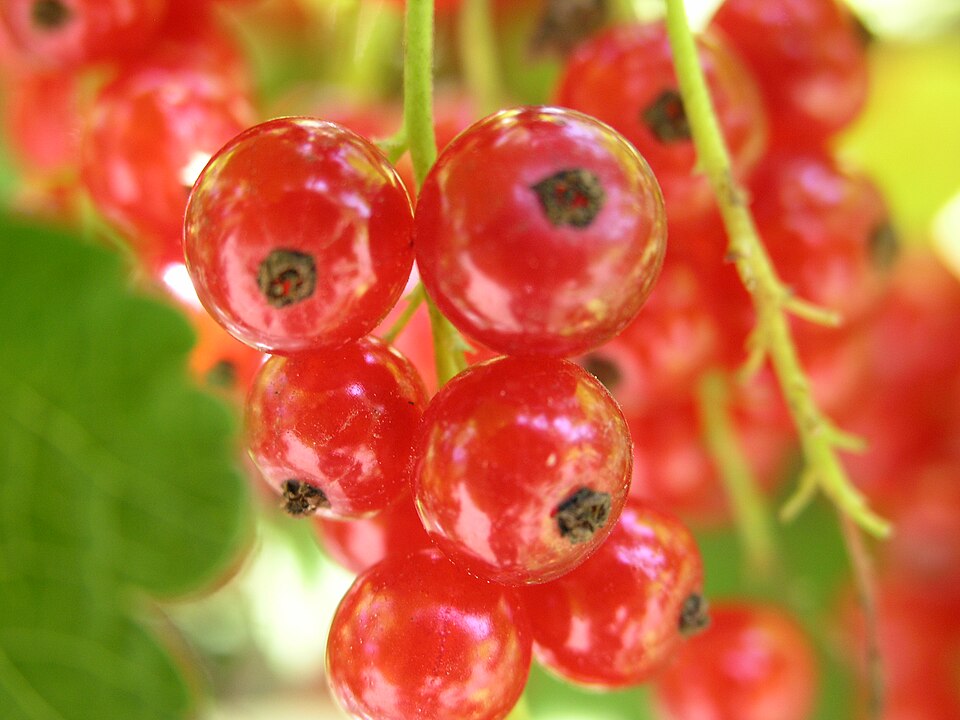

1. Red Currants (Ribes rubrum) and Black Currants (Ribes nigrum)
Known for their vibrant red color and translucent appearance, red currants thrive in cooler climates and can often be spotted in partial shade or under small trees. In New Mexico, you’ll find them growing at higher elevations. They are deciduous shrubs that grow from four to six feet tall. The fruit grows in clusters on spurs that are two to three years old.
Black currants are another popular currant. They are found in moist shady areas of big timber or along streams. They have white trumpet-shaped flowers that turn into sweet black berries.
Foragers can collect these tangy berries during early summer, often mid-June to mid-July, and use them to make delicious jams, jellies, and sauces. You’ll know that the currants are ready for harvesting when the berries are soft to the touch and have a deep red or black color.
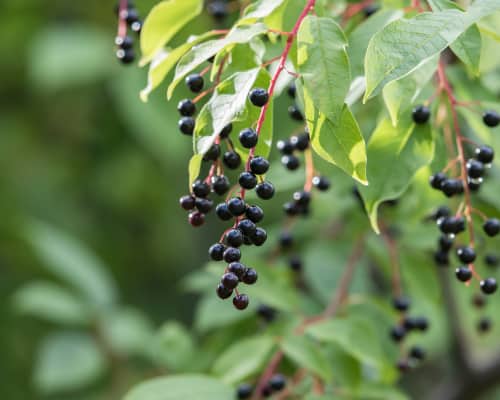
2. Chokecherries (Prunus virginiana)
You don’t want to harvest chokecherries when they’re red. Chokecherries have a reputation for being tart, astringent wild edible berries. When you bite into a red one, it’s especially, unpleasantly, astringent. This leads many people to believe that they dislike the taste of this edible fruit.
Instead, wait until chokecherries are deep purple. This is when it’s at its best. While it’s still a tart fruit, you may still like it. Many people enjoy eating chokecherries cut in half, with the seeds removed and salt sprinkled over the fruit. Other people prefer to pit their chokecherries and mix them in with other, sweeter berries inside a smoothie or a baked good.
Chokecherries are also great for juicing. This will get rid of the seeds and give you the opportunity to use the juice when making fruit leather or smoothies.
Note that you definitely don’t want to eat the seeds. Chokecherries are similar to the varieties of cherries you find at the grocery store, or apricots or plums, in that you don’t want to eat the seed. There is a chemical inside the seed that can turn into cyanide when ingested. This is dangerous when you eat the seed, it cracks open, and your body tries to digest it. This is only really dangerous in large amounts, but it’s why we don’t eat the seeds in these types of fruit. Always make a habit of properly removing the pits from your chokecherries or other similar fruits.
You’ll find chokecherries growing in unexpected areas. This small tree is adaptable, so it’s happy to grow in rich soil or poor soil. You’ll find it while hiking in ravines or growing alongside waterways. Sometimes it’s growing on the side of the road.
The berries will be growing on small trees or shrubs. In the spring, they’ll be covered in white flowers. They’re most common in the north half of the state, where they are harvested in late July through August.
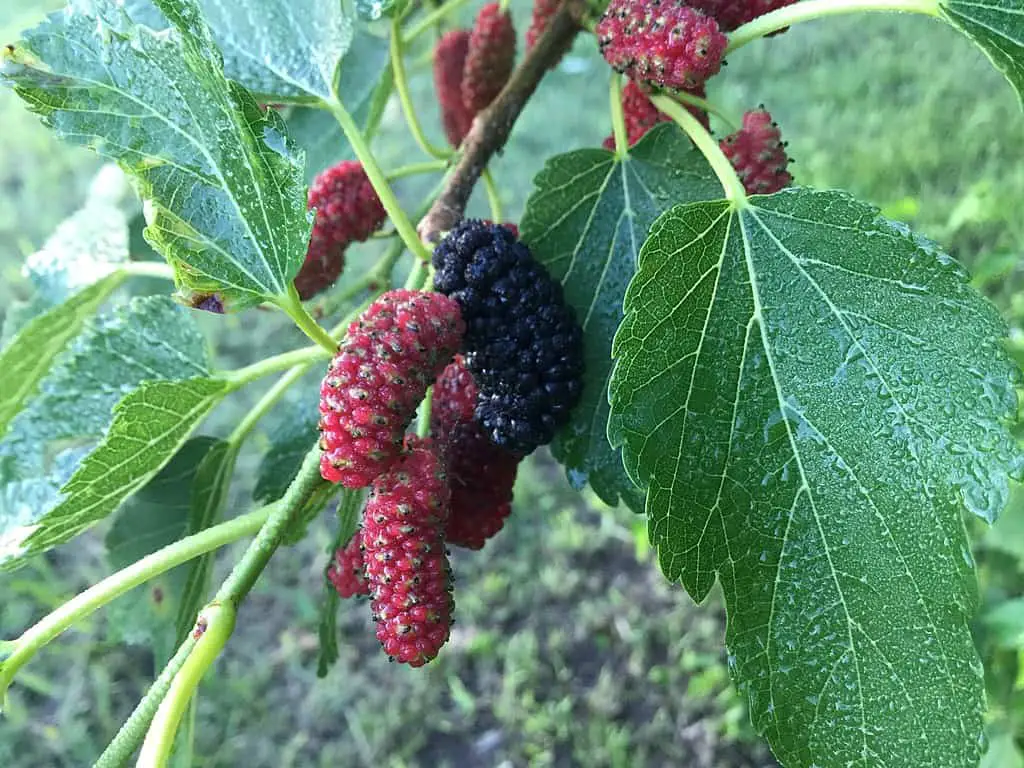
3. Mulberry Tree (Morus spp.)
Residents of Albuquerque are well acquainted with mulberry trees. Some people curse them because when the mulberries are flowering, they produce a great deal of pollen. For allergy sufferers, the mulberry trees are not the delight that they are for foragers looking to harvest fresh, edible berries.
Commonly found in home gardens and along streets, the mulberry tree is a perennial plant that produces succulent berries in shades of red, black, or white. These berries, resembling elongated raspberries, are easily recognizable by their glossy leaves and can be foraged during a two to four-week period in early summer, often in June.
Mulberries can be enjoyed fresh, added to smoothies, or turned into jams and desserts. Many residents who have them growing in their neighborhoods will harvest them by the bucket full, clean them up, and freeze them to use in smoothies and baked goods all year round.

4. Oregon Grape (Mahonia aquifolium)
A native species to the Pacific Northwest, the Oregon Grape’s small blue-black berries are rich in antioxidants and grow in clusters similar to grapes. In the spring, Oregon Grape will have yellow flowers. By July, you’ll notice the berries. You’ll also notice that the plant has sharp and pointy holly-like leaves. It’s a good idea to wear gloves when you go to harvest wild Oregon grapes.
Often found in the high desert, these berries can be foraged from July to September and incorporated into recipes for a unique tart flavor.
Oregon grape is naturally high in pectin. Because of this, they are a particularly popular berry for people who love to make jams and jellies or pies.
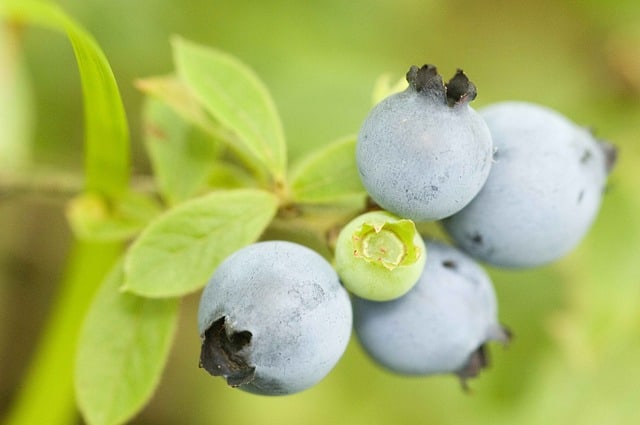
5. Wild Blueberries (Vaccinium spp.)
While blueberries may be commonly associated with cooler climates, certain varieties thrive in the higher elevations of New Mexico. Recognizable by their blue hue and small size, wild blueberries can be discovered in dryland wilds and open meadows. These berries are a perfect snack for on-the-go foragers and can also be used in baked goods or as a topping. You’ll find wild blueberries in the late summer or early fall, often in September.
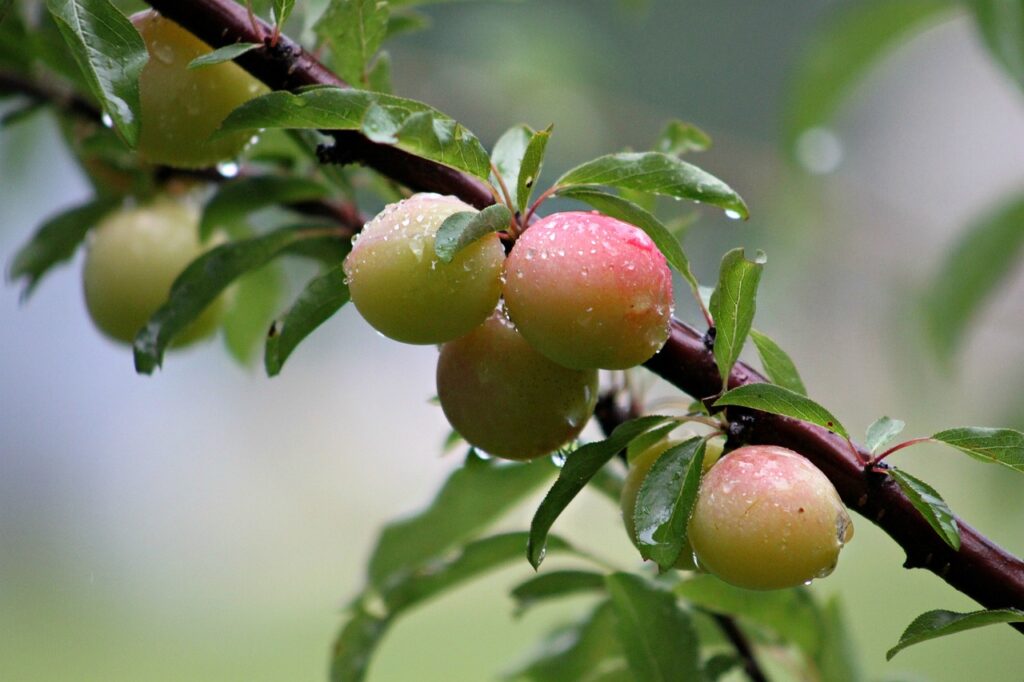
6. Wild Plums (Prunus americana)
Growing on small trees, wild plums boast a reddish or yellow hue and are a staple of the late summer foraging season. These plums are abundant in the region and can be found along trails, in woodlands, and near water sources. Whether enjoyed fresh or turned into preserves, wild plums provide a burst of sweetness. Wild plums ripen in New Mexico in late May and June.
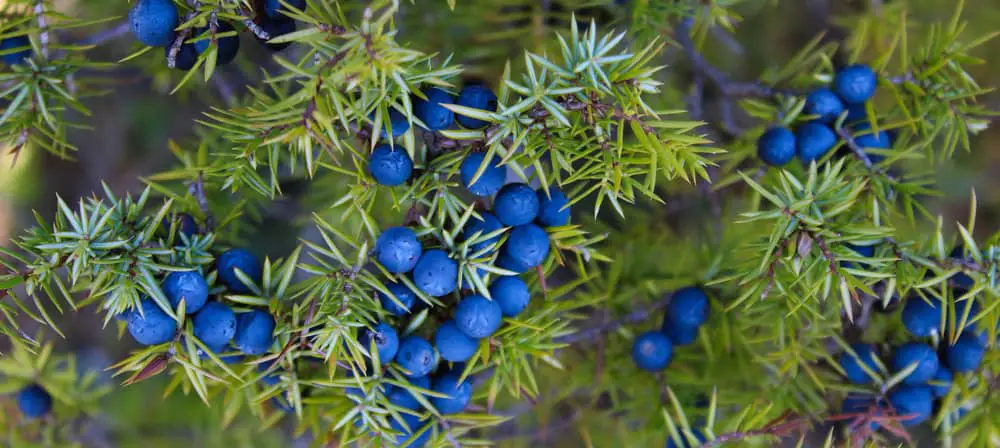
7. Juniper Berries (Juniperus spp.)
Juniper berries, often used as a flavoring for gin, are a common find in the high desert landscapes of New Mexico. These small, dark berries grow on juniper shrubs and can be foraged during late summer. They add a distinctive piney taste to both savory and sweet dishes.
Indigenous people found different uses for juniper, but some of the common ways juniper has been used as medicine include treating urinary tract infections, fevers, headaches, kidney stones, sore throats, joint inflammation, and cold symptoms.
Unlike many of the other wild, edible berries in New Mexico, you can harvest juniper berries in the fall and winter. You’ll be competing for these wild fruits with the surrounding wildlife. It isn’t uncommon to see the plant has been picked clean by birds before you got there. I

8. Wild Rose Hips (Rosa spp.)
After the beautiful blooms of spring, wild roses produce rose hips, which are small, round, and red or orange in color. These wild fruits are sometimes called rose berries. These berries are packed with vitamin C and antioxidants. They are a powerhouse berry known for promoting good health, which makes them particularly popular with foragers. The berries can be gathered in late summer or early autumn when you’ll be competing with local wildlife for the delicious fruit. Wild rose hips make excellent additions to teas, syrups, and jams.
Rose hips are good for your immune system because they are high in vitamin C and phenolic and flavonoid antioxidants.
You’ll often find wild rose hips growing at higher elevations in New Mexico. You’ll see them growing with delicate pink or white flowers earlier in the year. You’ll recognize the prickly stems that roses are known for. Due to those thorns, you’ll want to bring some tools with you when you go to pick their red berries. Bring along some gloves and clippers when you decide to harvest rose hips.
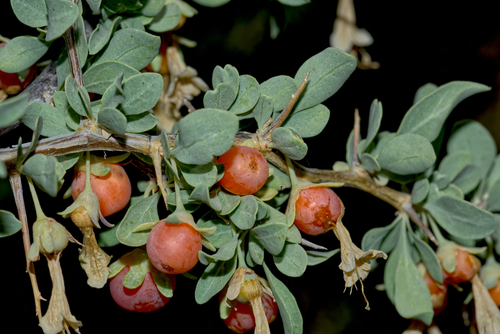
9. Torrey Wolfberry (Lycium torreyi)
Indigenous to the southwestern United States, Torrey wolfberries are uncommon small fruit that flourish in the arid regions of New Mexico. Recognizable by their red fruit and slender branches, these berries are best foraged in late summer. They have been traditionally used by Native Americans for their potential health benefits.
You might hear your fellow foragers refer to wolfberries as goji berries. That’s a common misnomer, though it’s close enough to the truth. If you ate a goji berry and a wolfberry, you’d have a hard time telling the two apart. They are from the same berry family, and they taste and look similar. However, goji berries are simply another type of wolfberry.
The Torrey wolfberry in New Mexico is bright and colorful berries that grow on bushes that can grow as high as ten feet tall. When the berries are ripe and edible, the normally thick and fleshy leaves may be dying off. This is because the plant, which manages to thrive in dry conditions, will divert its energy toward creating juicy berries and stop supplying its leaves with as much water. If there have been heavy, recent rains, you’ll notice the leaves will still be thick and lively. It all depends on how the season has been going this year.
In the spring, you’ll see light to dark purple flowers growing on the wolfberry bush. You’ll start seeing red berries in New Mexico as early as the mid-summer, but more likely in the autumn around September.

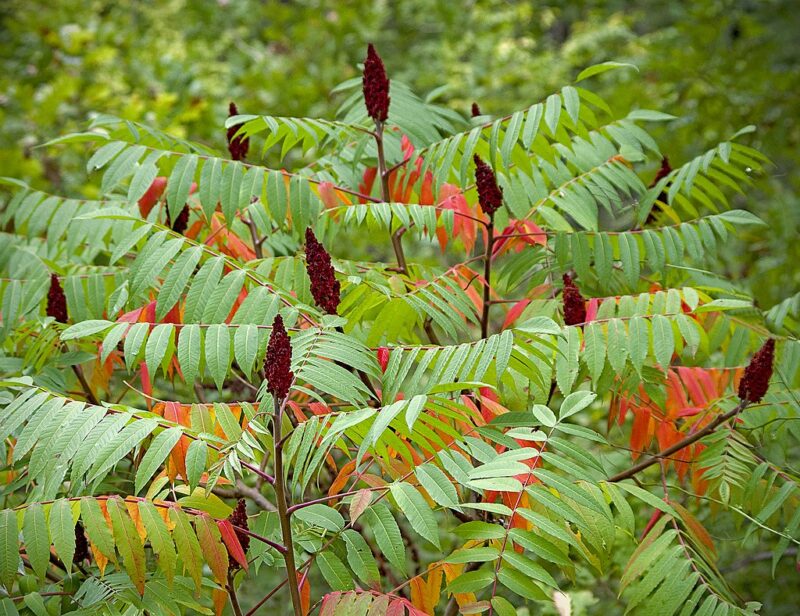
10. Staghorn Sumac, Smooth Sumac, and Three-Leaf Sumac (Rhus typhina, Rhus glabra, Rhus trilobata)
There are three types of sumac in New Mexico with red, edible berries, Staghorn Sumac, Smooth Sumac, and Three-Leaf Sumac. These types of Sumac are drought tolerant, making them a great edible find in New Mexico, especially in the northern part of the state.
The edible bright red berries have a tart flavor on the outside of their skin. They are often described as tasting like they’ve been infused with lemons. You’ll find them growing in the full sun in New Mexico’s meadows. These red berries ripen in August.
You have probably heard of poison sumac. Poison sumac is a dangerous plant that isn’t known to grow in New Mexico. Additionally, poison sumac produces white berries. You never want to touch poison sumac with its white berries; these are not edible. Poison sumac tends to grow in moist soil in wetland areas.
Even though poison sumac isn’t known to grow in New Mexico, you can play it safe by only touching sumac once you see that it has red berries.

11. Elderberries (Sambucus nigra and Sambucus racemosa)
You’ll find both red and black elderberries growing in New Mexico. You’ll find the red elderberry in the northern half of the state and the black elderberry in the central and southern parts of the state.
Red elderberry is likely to make you sick and is best avoided. The black elderberry in the central and southern parts of New Mexico is edible as long as they are cooked and the seeds are removed. This is why you typically see black elderberry made into syrups, jams, and wines.
When it comes to foraging for wild berries in New Mexico, elderberries are a must-mention. These wild edible fruits are a valuable addition to any forager’s basket, not only for their culinary uses but also for their potential health benefits. The black, edible elderberries are packed with vitamin C and other important nutrients.
Elderberry bushes are shrubs that can reach heights of 5 to 13 feet. They have distinct clusters of small, dark berries that grow in umbrella-shaped bunches. The berries themselves are tiny and round, with a deep color when fully ripe. Elderberry leaves are compounded with five to nine leaflets and have a serrated edge.
Elderberries typically ripen in late summer to early autumn, usually from August to September. It’s essential to wait until the berries are fully ripe before harvesting, as unripe elderberries can be mildly toxic.

12. Wild Raspberries
Yes, you can find red raspberries growing wild in New Mexico. They typically grow in dense thickets in areas with plenty of sunlight and can often be found along the edges of fields, in hedgerows, or in other areas with ample sunlight.
Wild raspberries are identified by their small, delicate, red berries that grow in clusters. With a little patience and a keen eye, you can easily find and enjoy the sweet and tangy taste of fresh, wild raspberries.
The window for finding wild raspberries in New Mexico is fairly brief. You’ll want to start looking in late June. The season lasts through the middle of July.
Foraging Considerations
Before embarking on wild walks to forage for these edible treasures, it’s essential to be well-prepared with a field guide and proper knowledge of the local thistles and other plants. Foraging in a sustainable manner ensures that these plants will continue to thrive for years to come. So, whether you’re a seasoned forager or a beginner, exploring the wild edible berries of New Mexico can be a rewarding and enriching experience, connecting you with the land and its bountiful offerings.
Recent Posts
The only venomous snakes in Washington State are Northern Pacific Rattlesnakes. The Northern Pacific Rattlesnake (Crotalus oreganus oreganus) is a sub-species of the Western Rattlesnake. Anyone...
Skunks are not classified as true hibernators. But they go into a state of torpor when the weather gets cold. Skunks are light sleep hibernators, along with opossums, bears, and raccoons. ...

